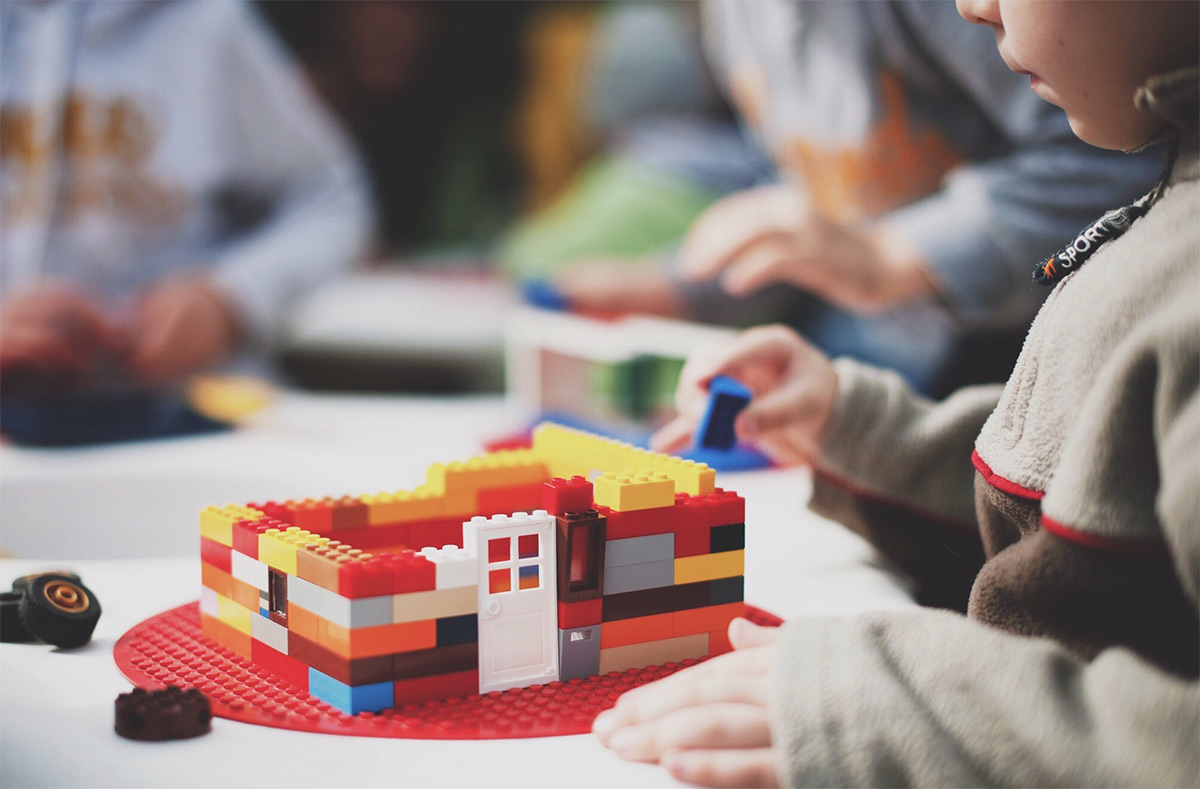

ave you ever tried to homeschool a wiggly, fidgety, distracted child? I remember when my children were young and I hadn’t yet realized I didn’t need to try to run my homeschool like a public school classroom. I thought my children needed to sit still and be quiet in order to learn. It sounds silly to me all these years later, but, at the time I was doing the only thing I knew to do. I had no idea why it wasn’t working.
Most of our school days started out with good intentions and high expectations and ended up with tears and frustration. I knew my children were capable of learning, and I wanted them to enjoy it. I was baffled by their seeming disinterest. I felt like a failure.
To be honest, I don’t remember how I came to the conclusion that my kids needed more physical activity and less structured, sit-at-the-table-and-be-quiet time. But I’m thankful I did. That single realization made more difference in our homeschool than any other decision or bit of knowledge I gained during my entire homeschool career!


ave you ever tried to homeschool a wiggly, fidgety, distracted child? I remember when my children were young and I hadn’t yet realized I didn’t need to try to run my homeschool like a public school classroom. I thought my children needed to sit still and be quiet in order to learn. It sounds silly to me all these years later, but, at the time I was doing the only thing I knew to do. I had no idea why it wasn’t working.
Most of our school days started out with good intentions and high expectations and ended up with tears and frustration. I knew my children were capable of learning, and I wanted them to enjoy it. I was baffled by their seeming disinterest. I felt like a failure.
To be honest, I don’t remember how I came to the conclusion that my kids needed more physical activity and less structured, sit-at-the-table-and-be-quiet time. But I’m thankful I did. That single realization made more difference in our homeschool than any other decision or bit of knowledge I gained during my entire homeschool career!
Think about it this way. Exercise, no matter whether it comes from working or playing, tends to help our children learn better, behave better, sleep better, and even be happier. After all, God created us to work and be active. He literally made our bodies to feel better and be healthier when we move more and participate in physical activities. When we require our children to sit still for hours at a time, we’re putting them in an unnatural situation and making it much less likely that they’ll be successful, happy, and well-behaved.
You’ll be happy to know that getting active in lieu of doing more traditional schoolwork doesn’t mean your kids won’t be learning anything. There are lots of ways to encourage them to move and learn at the same time! I’m going to share some tried and true ideas for making it happen.

If you aren’t able to travel, the second best way to learn about other places and cultures is through virtual field trips. There are many free virtual field trips available online. You can even find virtual trips to places like the moon! And to learn even more, cook up some fun with your virtual trip.
Cooking is another way to learn more about other cultures. Even if you can’t visit, you probably can try a dish or two related to that city, state, or country.
Make Spelling Fun & Active
- Toss a ball back and forth with your child (or have two children toss a ball back and forth) while practicing spelling. The catcher gives the next letter of the word they are spelling.
- Play hopscotch in a similar way. As the child hops onto the next square, he or she has to say the next letter of the word.
- Use a paint brush dipped in water to paint spelling words onto a hot concrete driveway or porch. Watch the words disappear!
- Use colored sidewalk chalk to write spelling words outside on the driveway. For extra practice, trace the same word several times using a different colored chalk each time.
Make Reading Fun & Active
- Act out scenes and stories. This is a great way to check for understanding, spark conversations about the moral of the story, discuss the order of events, and encourage your children to share their personal feelings about events and characters you’ve been reading about.
- If you want to read aloud to your children—which is a wonderful way of demonstrating how to read in an interesting way with proper inflection and timing, etc.—allow them to jump on the trampoline or swing as you read to them.
- If it’s a rainy day and you’re stuck indoors, let them rock in a rocking chair or build with blocks or Legos while they listen. My nephew developed some seriously awesome balance skills as he perched on an exercise ball while his mom read aloud to him!
Make Science Fun & Active
- Make a volcano when you’re studying chemical reactions.
- Build a rocket when you’re studying Newton’s third law of motion.
- Make paper airplanes as part of your study of lift, drag, and design and how they affect airplanes and flight. My son read an entire book on paper airplanes and how they work. He loved reading about how the design affects the ability of each plane to fly farther or higher. Who knew he would learn so much from his interest in paper airplanes?!
- Grow a garden!
Make Math Fun & Active
- You can talk and learn about patterns through movement! Try tapping your toes, snapping your fingers, or clapping to demonstrate patterns.
- Combine sports and math. Have your children time themselves when they run. Talk about how much faster or slower they would have to run in order to be 25% faster or 50% slower, etc.
- Sing math songs while you play outside.
- Do scavenger hunts and incorporate math problems into your clues.
- Go grocery shopping together. What would you be spending if you were able to save 20% on your purchases? Or have your kids round the cost of each item as you place it in your buggy. Use mental math to keep a running tally. How close was the amount they got to the actual amount of your bill?
- Even if you’re taking a break from formal school work, you can still work on developing thinking skills and creative problem solving—especially if you have older children or teens—by doing escape rooms! This is also a way to work on team building, collaboration, and time management skills. And besides all that, it’s just plain fun.
- Visit a place that offers ropes courses, obstacle courses, or water-related games and activities. These kinds of activities are perfect for incorporating physical activity and, like escape rooms, also encourage problem solving and thinking skills.
- Encourage your children to take up a new hobby such as photography. They might want to experiment with various outdoor backgrounds and lighting. They could see how the time of day affects the photos they take. Or they might want to try taking action photos, still photos, or photos of people or animals, etc.
- Your children might want to try videography. This is a fun way to share information your children are learning in your homeschool with grandparents or friends.

- Try making clothing related to a time period you’re studying in history. This can be as simple as creating it from paper bags or leftover fabric, or it can be as elaborate as buying or creating a pattern and sewing clothing from that time period.
- Put on a play related to a historical event. Write a play and perform it, or find a play to perform for friends and family.
- To incorporate art and science, do things like leaf rubbings or art projects created with rocks, leaves, sticks, etc.
- Create art that’s connected to something you’re studying. This can be related to any topic you’re studying—even math or English grammar! For example, do a drawing or painting using as many nouns or verbs as possible. Or do some kind of artwork showcasing different math concepts or math facts.
Depending on the ages of your children, you can take these ideas and use them as-is or as jumping-off points for your own ideas. I hope they inspire you to take some time to ditch the books and do some fun and physical activities on a regular basis.
